IRIN
New York, 30 May 2014
Scientific advances in human biology may soon have a profound bearing on the policies that governments and organizations adopt towards young mothers, caregivers and babies in poor and stressed communities. 
There is an emerging body of scientific evidence to show that the environment in which a very young baby develops is pivotal in shaping its brain in ways that can significantly influence its chances in later life.
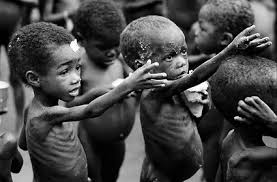 “Toxic stress”, depicting a relentless cycle of stress inflicted on a child whose parents may be battling to survive, unable to nurture it properly; or where there may be violence, neglect and/or poor nutrition, can result in negative patterning on the baby’s brain that can inhibit intellectual and emotional growth and hamper his or her chances of success. This negative imprint, just like a positive imprint, gets handed down from one generation to the next.
“Toxic stress”, depicting a relentless cycle of stress inflicted on a child whose parents may be battling to survive, unable to nurture it properly; or where there may be violence, neglect and/or poor nutrition, can result in negative patterning on the baby’s brain that can inhibit intellectual and emotional growth and hamper his or her chances of success. This negative imprint, just like a positive imprint, gets handed down from one generation to the next.
University of Cape Town-affiliated neurobiologist, Barak Morgan, says: “We have known for a long time that early childhood is very important, but now science is telling us exactly how important it is.” Whereas educational policies tend to stress the importance of the early school years, the new science suggests that the birth to three-year time frame could be the most cost-effective and critical period for intervention in a child’s life.
In a paper entitled, “Biological embedding of early childhood adversity: Toxic stress and the vicious cycle of poverty in South Africa”, Morgan explains how signals from the environment are known to add permanent “epigenetic marks” onto DNA during sensitive periods of early brain development – both before and after birth. Then a period of resistance settles in, where it becomes very difficult to change these pathways. It is not known exactly when all of these brief, sensitive windows occur, but the first two to three years in a child’s life are critical for him or her to acquire emotional self-regulation skills that make the difference between failure and success later in life.
SPARE THE ROD
Groundbreaking research by Canadian Michael Meany several years ago on lab rats showed that the amount of licking and grooming the baby rats received in their first days of life determined their responses to stress.
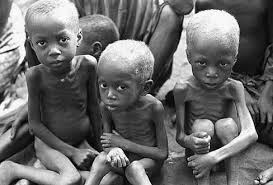 Those that received minimal licking and grooming were primed to survive their environment with “flight or fight” responses” by having more epigenetic marks on the brain’s major stress gene. Pups that were licked and groomed adequately, regardless of whether by their biological mother or a surrogate mother, had less of these marks, which made them resilient to stress and primed to thrive. Later studies on humans, also in Canada, showed that the brains of suicide victims had more epigenetic marks, similar to those of the poorly nurtured rat pups.
Those that received minimal licking and grooming were primed to survive their environment with “flight or fight” responses” by having more epigenetic marks on the brain’s major stress gene. Pups that were licked and groomed adequately, regardless of whether by their biological mother or a surrogate mother, had less of these marks, which made them resilient to stress and primed to thrive. Later studies on humans, also in Canada, showed that the brains of suicide victims had more epigenetic marks, similar to those of the poorly nurtured rat pups.
“The shape and impact of these pathways are sculpted in a once-off way during early development when environmental influences, as mediated by parental care, are most deeply embedded in offspring biology,” Morgan writes. Crucially, the epigenetic marks hamper the development of more sophisticated, flexible “top down” brain functioning that is associated with strong self-regulation and the ability to thrive, as distinguished from more reflex, survival-oriented, “bottom up” brain functioning.
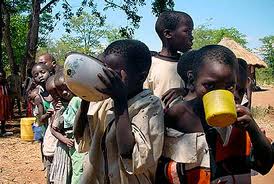 Morgan writes that children with poor self-regulation are shown to mature into adults with “significantly higher rates of substance dependence, criminality, financial problems and single parenthood, and significantly lower income, financial planning skills, socioeconomic status and physical health.”
Morgan writes that children with poor self-regulation are shown to mature into adults with “significantly higher rates of substance dependence, criminality, financial problems and single parenthood, and significantly lower income, financial planning skills, socioeconomic status and physical health.”
He adds: “Only very recently has interdisciplinary neuroscience begun to reveal and characterize the stress of chronic poverty as a major environmental toxin that becomes embedded in the biological fabric of bodies and minds in ways that cripple healthy development.”
NATURE AND NURTURE
Things have moved very fast since these fairly recent research findings and an entire body of literature is now emerging around “how the environment gets embedded in biology,” he says. The new findings render the “nature” versus “nurture” debate obsolete. Morgan says it is now clear that genes and the environment form an inseparable whole. “Genes can do nothing alone, something in the environment must tell DNA when and what to do. Nature versus Nurture turns out to be Nature and Nurture,” he writes.
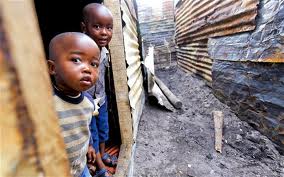 Furthermore, this embedding of the environment in the genes “gains intergenerational momentum”, he says. The lab rat research shows that rat pups that were not licked and groomed properly, matured into adults that did not nurture their own pups properly either. This helps to explain how the cycle of poverty and deprivation can be reinforced from one generation to the next.
Furthermore, this embedding of the environment in the genes “gains intergenerational momentum”, he says. The lab rat research shows that rat pups that were not licked and groomed properly, matured into adults that did not nurture their own pups properly either. This helps to explain how the cycle of poverty and deprivation can be reinforced from one generation to the next.
While there is always room for new science, those in the field are not contesting the latest findings. Some argue that there is enough evidence at hand to nudge governments into implementing new policies that aim to reduce the impact of violence and poverty on babies and toddlers. Leading the pack is Harvard University’s Center on the Developing Child director, Jack Shonkoff, an expert in child health and development.
After a recent UNICEF panel discussion by scientists on the subject, Shonkoff said in a televised interview: “The quality of the foundation we build in the first couple of years doesn’t completely determine everything that is going to come later, but it nevertheless sets you up for a lifetime of good prospects for healthy development, or it puts you in a deep hole that says the risks are much greater that you will have problems across the board.”
In the interview Shonkoff says that the new science is leading to a much deeper understanding of why poor nutrition is so problematic in early childhood. “It’s not just because kids are not growing well but it’s because their brain development is affected by it.” He adds that interventions that merely offer stimulation for children in poor communities are inadequate. “It’s a matter of figuring out how to protect their developing brain from the stress – toxic stress – associated with chronic exposure to violence, really deep poverty and the day-to-day stress of just barely getting by.”
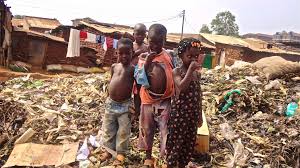 Lawrence Aber, a psychologist from New York University’s Steinhardt School of Culture, Education and Human Development, is an expert on the impact of poverty and violence on early child development. “Before, policymakers didn’t think very young children would be affected so badly because they didn’t talk or didn’t seem to be aware,” he says. “Now however, science has shown just the opposite. In fact they are highly sensitive to their environment – more so than at any other time in their life cycle.” Aber is involved in research on how HIV/AIDs and poverty impacts on children in South Africa.
Lawrence Aber, a psychologist from New York University’s Steinhardt School of Culture, Education and Human Development, is an expert on the impact of poverty and violence on early child development. “Before, policymakers didn’t think very young children would be affected so badly because they didn’t talk or didn’t seem to be aware,” he says. “Now however, science has shown just the opposite. In fact they are highly sensitive to their environment – more so than at any other time in their life cycle.” Aber is involved in research on how HIV/AIDs and poverty impacts on children in South Africa.
POLICY IMPLICATIONS
The new research has profound and practical implications for policy, he believes. “Our knowledge about what is happening inside a child’s brain must direct our attention outside – to the environment – and to reducing poverty and violence.” Later exposure in life to these negatives can also impact a child’s development but early exposure seems to be the most scarring. “The earlier the twig is bent the more likely it is to grow in the direction you bend it. The earliest years are the most vulnerable years,” he adds.
But what is the prognosis for the countless babies who have already been exposed to toxic stress? The science seems to suggest that early damage is irreversible. This is not so, say the scientists, however. “It is not just a story of doom and gloom, or a case of once bent always broken,” says Aber. “One must remember that human beings – including very young and vulnerable ones – have enormous capacity for resilience, or what developmental scientists call plasticity. Children can bounce back. We can help them recover from the toxic stress they experience in infancy and toddlerhood.”
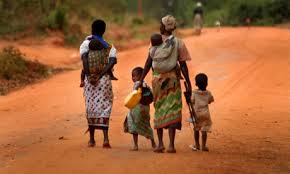 Morgan also sites research on Romanian babies in institutions that shows the importance of timing to counteract the effects of stress. The cognitive and social outcomes for severely emotionally deprived babies adopted before 20 months of age were as good as those of their Canadian and British peers who had not been deprived. However, for those adopted after 20 months of age, the prognosis was less rosy. There is also the “dandelions” and “orchids” hypothesis, which suggests that some children (dandelions) are less genetically predisposed to being influenced – positively or negatively – by their environment than others who are more sensitive (orchids).
Morgan also sites research on Romanian babies in institutions that shows the importance of timing to counteract the effects of stress. The cognitive and social outcomes for severely emotionally deprived babies adopted before 20 months of age were as good as those of their Canadian and British peers who had not been deprived. However, for those adopted after 20 months of age, the prognosis was less rosy. There is also the “dandelions” and “orchids” hypothesis, which suggests that some children (dandelions) are less genetically predisposed to being influenced – positively or negatively – by their environment than others who are more sensitive (orchids).
While there is growing awareness of the need for investment in children long before they enter school, Aber believes that not everyone is ready to act. “The logic is irrefutable but we haven’t made the policy investments yet,” he says, adding however that governments in developing countries “are starting to realize that if they don’t affect change in the first years of a child’s life there will be a glass ceiling on what can be achieved in the education system and ultimately, on national productivity.”
For children living in poverty in South Africa, where domestic violence rates are high, toxic stress “is a newly recognized pandemic that must be addressed,” Morgan argues.
INVEST IN CHILDREN
But what kind of interventions can be made? Aber sites the benefits of the “conditional cash transfer” system on poverty alleviation efforts in Latin America and increasingly, Africa and South Asia.
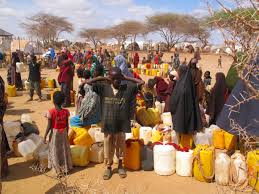 “These cash payments to very poor families are conditional on the family’s investment in the child’s development,” he says. These schemes encourage mothers to attend antenatal classes, get their babies immunized and their children to attend school, for example. They can be adopted to help minimize the effects of poverty and violence too.
“These cash payments to very poor families are conditional on the family’s investment in the child’s development,” he says. These schemes encourage mothers to attend antenatal classes, get their babies immunized and their children to attend school, for example. They can be adopted to help minimize the effects of poverty and violence too.
Visits from health workers to new mothers have been shown to improve parental practices in Khayelitsha, South Africa, for example. Programs that help parents understand the dangers of exposing their young children to toxic stress, and help them find ways to shield them from it, can help too.
But what is called for, says Aber, is far more than small-scale programmatic intervention. “The entire system needs to address this on a broad population level.”
IRIN
IRIN, the humanitarian news and analysis service of the UN Office for the Coordination of Humanitarian Affairs

